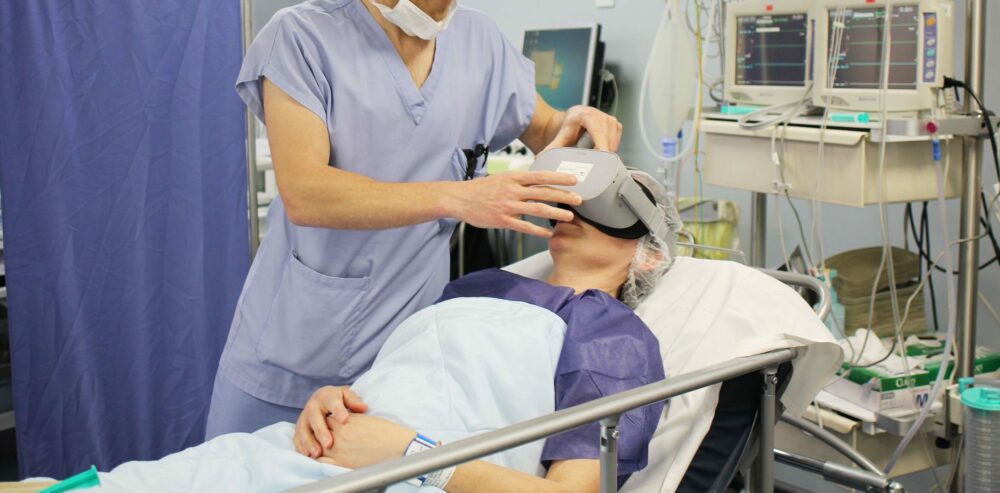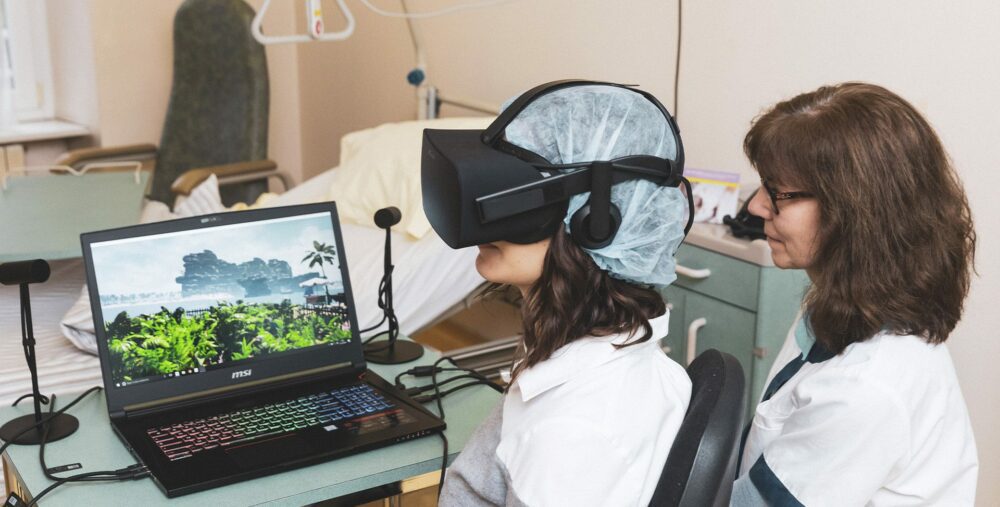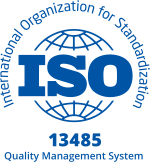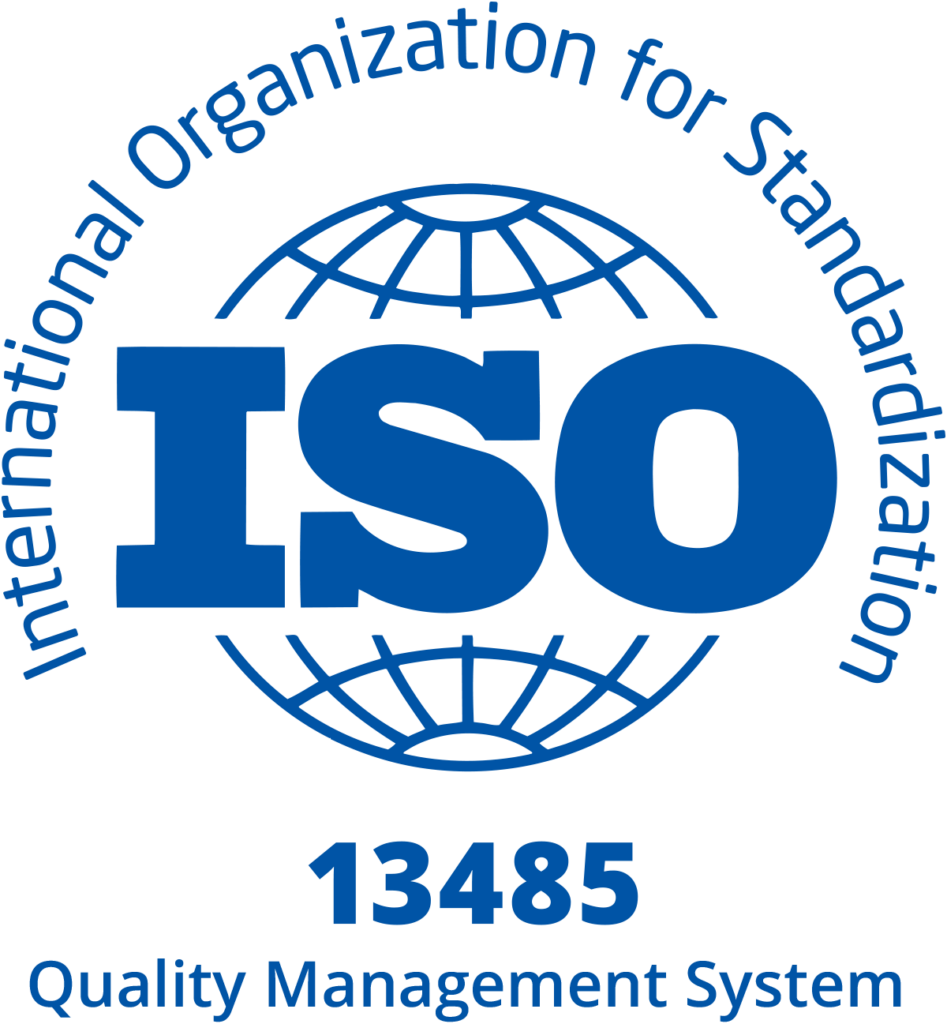All the components for creating an effective virtual reality software
For several years now, virtual reality has been in the news, and for good reason: it is revolutionising several sectors. From health to real estate, including training and video games, 3D glasses leave no one indifferent. If we know the interest of this innovative technology to entertain, learn or relax, do you know how it works in practice? The whole point of immersion lies in the ability to cleverly deceive our senses by offering a multi-sensory experience. In this article, we’ll show you how a virtual reality software achieves this.
Creating a coherent and realistic virtual environment: the basis for a successful immersion
If we go back to the beginning, what is the principle of a virtual reality headset? It is to offer us a three-dimensional simulation (3D) of a world that can be explored and modulated. VR allows us to experience real sensory-motor and cognitive activities in virtual environments. The visuals take into account the user’s perspective and follow their movements. For an immersion to be successful, several criteria come into play. The first is the quality and complexity of the proposed graphical environment.
It’s a known fact that virtual reality plays with our perceptions. By using a universe close to what we know, we manage to identify ourselves in the space. These references are an essential basis for the creation of a virtual landscape. If the fictional world has no anchor points or the graphics lack veracity, chances are we will not be won over by the experience. The more we believe in the device, the more immersed and receptive we will feel.
VR environments are designed on the computer using specialised virtual reality software such as Unity and Unreal Engine. To use them, knowledge of programming and 3D modelling is required. Of course, realistic immersion does not only rely on vision, but on other senses as well since virtual reality works best when it offers a multi-faceted experience. For this reason, the use of a powerful audio system allows the scene to become even deeper and guarantees an even more immersive simulation.

The reactivity of the system: the essential requirement for the illusion to be credible
The interest of virtual reality lies in its ability to immerse us in its universe. So if the device shows a large latency between the user’s movements and the response of the 3D environment, then the experience risks losing its appeal. Indeed, the longer the latency, the more anachronistic, distorted or simply incoherent the information you receive will seem. System stability is a major requirement in the operation of a virtual reality software.
The responsiveness of the environment isn’t the only aspect to be taken into account in the design, the sound ambiance must also be in tune with the scene that is taking place. If a bird flies overhead, but you can’t hear it, you won’t believe that the landscape is real. When the sounds match the positioning of objects or the orientation of the user, the virtual reality software gains credibility. Generally speaking, humans perceive a latency when it lasts longer than 50 milliseconds. If this delay is exceeded, then the artificiality of the environment takes over the experience.
User interaction: the engaging element of the simulation
There are several degrees of interactivity in an immersion. If we take the example of a video game, this parameter allows the player to be anchored in the virtual world he or she is exploring by acting directly on this environment. The ability to move remains one of the most common interactions in a virtual reality software. Other movements are derived from this base, such as jumping, climbing or running.
In order to keep the user engaged, there are elements that need to maintain his or her attention alert and constant throughout the experience. Indeed, Mary C. Whitton explains that after a few minutes in an environment with no real interactivity, the user becomes bored, which breaks their engagement. So changes in this space are essential to make the journey fascinating.

The example of the Healthy Mind virtual reality software
Each project takes into account these three aspects that we have just explored. To give you a concrete example, we suggest you discover how we develop our therapeutic virtual reality software.
1. The starting point: scripting the experience
Healthy Mind’s objective has always been to offer therapeutic and relaxing rides. As a result, the design of our environments does not come about by chance, but by reflection in this sense. When we consider a new theme, we first meet to assess the elements that we feel are relevant to our goal.
Once we have this first draft of the scenario, we consult with our medical team of anaesthetists and hypnotherapists to detail each step and validate them. In this way we avoid all aspects that look good on paper but may make patients feel uncomfortable. The doctors’ experience of therapeutic scripting provides a rich and accurate perspective on patients’ expectations and needs.
2. Putting it into practice: 3D environmental design
Reda Khouadra, one of the founders of the Healthy Mind device, trained himself in 3D techniques and produced the first landscapes using Unreal Engine. We continue to use this platform for the creation and programming of our themes, each lasting 20 minutes.
From the start, we agreed on a teleportation format and not a displacement one to avoid the phenomenon of cyber kinetosis, the motion sickness applied to VR. Indeed, the fact of moving in the virtual reality software while we are immobile will create a shift in the inner ear. This sensation causes headaches or nausea, which are particularly uncomfortable symptoms, especially in the hospital environment.
To keep patients’ attention, distract them from the pain and reduce their anxiety, environments incorporate relaxing and distracting elements such as animals or animated objects. Unlike a static experience, movement will catch the eye and intrigue the user. The first and second phase of our development process will take 6 months.
Originally, our themes were the Zen garden, the forest and the snowy mountain. Thanks to reviews from our customers, we expanded these environments to include an underwater landscape, a sunny mountain and a beach. Today, we continue to develop our resources with the creation of a paediatric environment, the magic archipelago, designed specifically for children, as well as a lake that will offer a meditative walk to bring serenity to the care team and improve their quality of life at work. Finally, we will soon offer an entertainment module with real images for patients who are resistant to 3D or for those who want a change of scenery during a long operation.
3. Immersion follow-up: Healthy Mind VR and Healthy Mind Control
Once we have completed the virtual reality software, we carry out a beta-test phase to obtain feedback on any problems encountered by patients. For example, we initially used a connected controller through which the patient could interact with the environment by moving or grasping an object. However, initial patient testing indicated that this approach was incompatible with some medical procedures. This feedback allowed us to establish a simplified device that accommodates all possible movements and positions of the patient and during which he or she remains passive.
At the end of this period, we improve our theme during two weeks before deploying it on a larger scale. All updates are made by us and don’t require the return of the material.
During the immersion, the care team has a software application on a tablet to follow the animation, set it up and control it. This application is specific to Healthy Mind and was also developed on Unreal Engine. The operation is simple: the carer turns on the tablet, connects via a direct wifi network between the two devices, defines the immersion settings (duration, patient profile, activation or not of a verbal accompaniment, etc.) and launches the simulation. The simulation doesn’t remain sealed since the caregiver can send text messages, activate a microphone to speak directly with the patient or interrupt the process if he or she wishes.
Would you like to discover how the Healthy Mind device works in a demonstration? Feel free to contact us, we would be delighted to meet you or give you more information.







